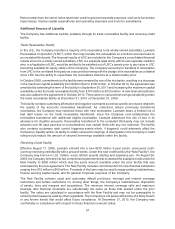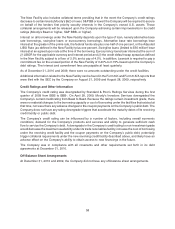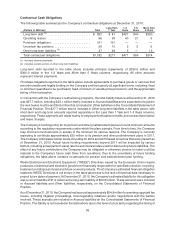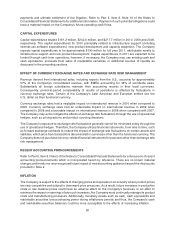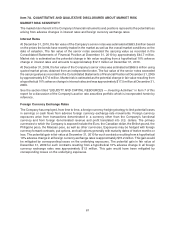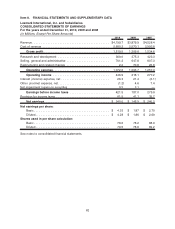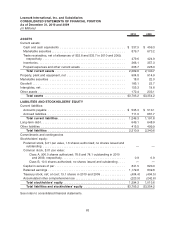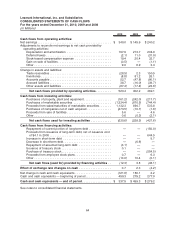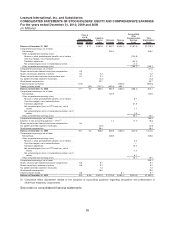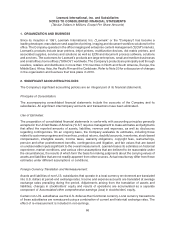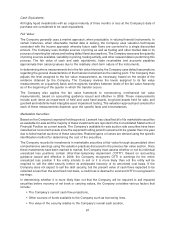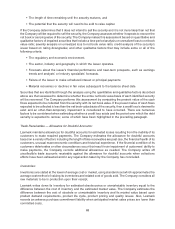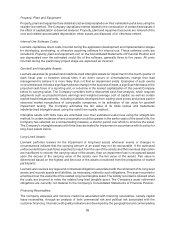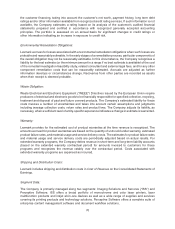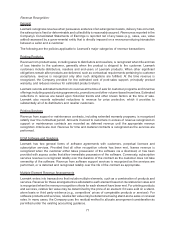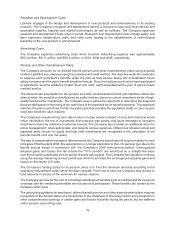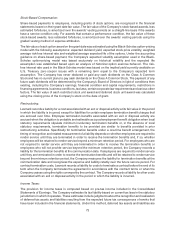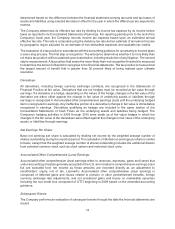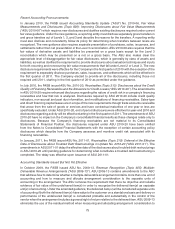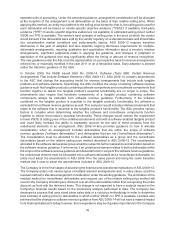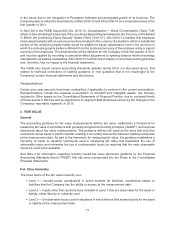Lexmark 2010 Annual Report Download - page 73
Download and view the complete annual report
Please find page 73 of the 2010 Lexmark annual report below. You can navigate through the pages in the report by either clicking on the pages listed below, or by using the keyword search tool below to find specific information within the annual report.Cash Equivalents:
All highly liquid investments with an original maturity of three months or less at the Company’s date of
purchase are considered to be cash equivalents.
Fair Value:
The Company generally uses a market approach, when practicable, in valuing financial instruments. In
certain instances, when observable market data is lacking, the Company uses valuation techniques
consistent with the income approach whereby future cash flows are converted to a single discounted
amount. The Company uses multiple sources of pricing as well as trading and other market data in its
process of reporting fair values and testing default level assumptions. The Company assesses the quantity
of pricing sources available, variability in pricing, trading activity, and other relevant data in performing this
process. The fair value of cash and cash equivalents, trade receivables and accounts payables
approximate their carrying values due to the relatively short-term nature of the instruments.
In determining where measurements lie in the fair value hierarchy, the Company uses default assumptions
regarding the general characteristics of the financial instrument as the starting point. The Company then
adjusts the level assigned to the fair value measurement, as necessary, based on the weight of the
evidence obtained by the Company. The Company reviews the levels assigned to its fair value
measurements on a quarterly basis and recognizes transfers between levels of the fair value hierarchy
as of the beginning of the quarter in which the transfer occurs.
The Company also applies the fair value framework to nonrecurring, nonfinancial fair value
measurements, based on accounting guidance issued and effective in 2009. These measurements
include such items as impairment of held and used fixed assets, long-lived assets held for sale, and
goodwill and indefinite-lived intangible asset impairment testing. The valuation approach(es) selected for
each of these measurements depends upon the specific facts and circumstances.
Marketable Securities:
Based on the Company’s expected holding period, Lexmark has classified all of its marketable securities
as available-for-sale and the majority of these investments are reported in the Consolidated Statements of
Financial Position as current assets. The Company’s available-for-sale auction rate securities have been
classified as noncurrent assets since the expected holding period is assumed to be greater than one year
due to failed market auctions of these securities. Realized gains or losses are derived using the specific
identification method for determining the cost of the securities.
The Company records its investments in marketable securities at fair value through accumulated other
comprehensive earnings using the valuation practices discussed in the previous fair value section. Once
these investments have been marked to market, the Company must assess whether or not its individual
unrealized loss positions contain other-than-temporary impairment (“OTTI”). Based on accounting
guidance issued and effective in 2009, the Company recognizes OTTI in earnings for the entire
unrealized loss position if the entity intends to sell or it is more likely than not the entity will be
required to sell the debt security before its anticipated recovery of its amortized cost basis. If the
Company does not expect to sell the debt security, but the present value of cash flows expected to be
collected is less than the amortized cost basis, a credit loss is deemed to exist and OTTI is recognized in
earnings.
In determining whether it is more likely than not that the Company will be required to sell impaired
securities before recovery of net book or carrying values, the Company considers various factors that
include:
• The Company’s current cash flow projections,
• Other sources of funds available to the Company such as borrowing lines,
• The value of the security relative to the Company’s overall cash position,
67


